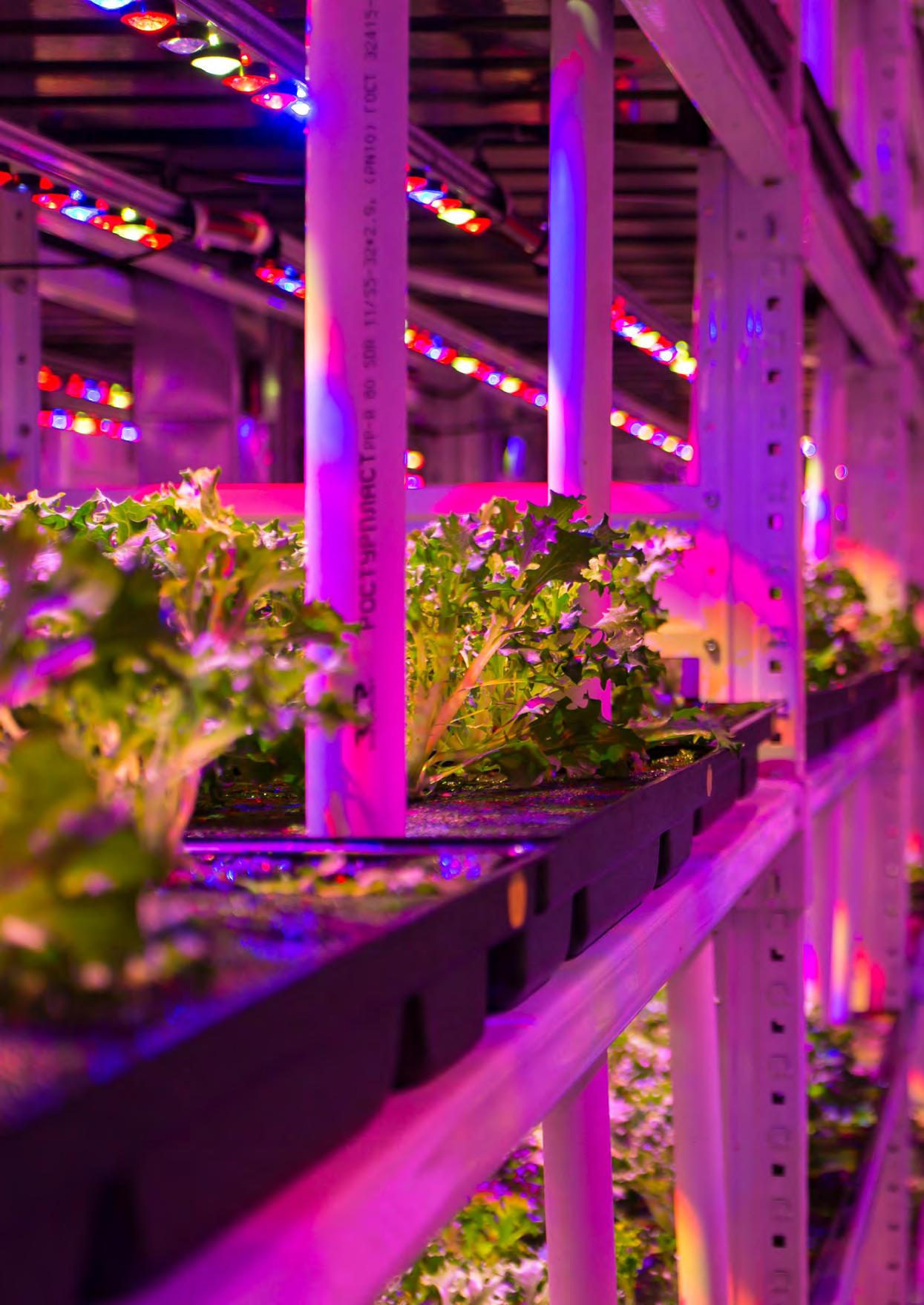
8 minute read
The indoor farm
from Segment magazine 4
Providing food security in the face of climate change
Growing food indoors under artificial light may seem anathema to many Kiwis, given how much the wide-open, free-range nature of Aotearoa New Zealand agriculture and horticulture is taken for granted here. But New Zealand is far from immune to the drivers that are prompting more countries to commit to indoor-based controlled environment agriculture (CEA) as a means to try and insulate from the big influencers on food availability and price.
Advertisement
CEA involves growing crops in an environment where key growing influences like temperature, humidity, light, nutrients, and carbon dioxide are all tightly controlled.
The growing methods are varied and include indoor growing in warehouse-type structures, where plants are stacked in layers, known as “vertical farming.”

Greenhouses are more familiar to most consumers, with protected cropping under canopies also now becoming more common in Aotearoa for conventionally grown vegetables, fruits, and berries.
Drivers for change
Climate change comes top of the list of reasons to adopt CEA, as a tool that could help insulate production from its impacts.
Close to home, few Kiwi consumers would not be aware of the effects a long, volatile, wet winter has had upon vegetable prices this year.
Even vegetables supposedly in season have experienced significant shortages due to sodden conditions, and their price increase of 10% year-on-year to July 2022 was a large contributor to the country’s soaring food prices.
With increasing populations has come increased pressure upon the high-value food-producing land that often encircles cities, with land being lost to housing creating even greater issues for feeding that growing population.
Since 2001 New Zealand has lost about 10,000 ha of growing land, an area just under the size of Hamilton, with Auckland alone potentially destined to lose a further 30,000 ha of high-value growing land in the coming 35 years as it approaches 2 million people.
This links to the third reason for a focus on CEA, a need for self-sufficiency.
As COVID-19 highlighted, supply chains globally are fragile, and for a country to lose its capacity to productively grow food and rely on imports makes it vulnerable to those supply chain limitations.
Combined with increasing input costs, labour shortages and shifts to more plant-based diets, intensive CEA operations are being recognised for their potential to help address those challenges. CEA is rapidly being integrated into national policies on food self-sufficiency in countries like Singapore and the United Arab Emirates.
New Zealand works to keep up on CEA advances
Science Group Leader at Plant & Food Research, Dr Samantha Baldwin, is leading the research direction at the organisation focused on urban horticulture and controlled growing. Her work includes understanding the complex dynamic developing between more intensified urban populations and how best to ensure they have a reliable, affordable food supply.
She sees a move to more intensive CEA farming as one that has already begun, albeit in a small way here in Aotearoa, as more outdoor growers try to mitigate climatic risk by using canopies, netting, and tunnelling on their high-value vegetables, fruit, and berries.
This has been driven as much by the increased occurrence of devastating climatic events like hail, unseasonal frosts, and wind damage, as by greater difficulties in acquiring crop insurance.
Baldwin points to the efforts in the rest of the world in intensify CEA farming, and the catalyst it provides for her and her colleagues here to keep up, or risk being left behind.
“Countries like Singapore and the United Arab Emirates have triggered a great deal of investment in this area where they want to be growing more produce locally. Going under cover and upwards is the only option.”
Singapore, for example, has adopted a “30 by 30” food policy. The city state is aiming to produce 30% of its nutritional needs by 2030, a significant increase from its current 10% in a country where only one percent of the land is available for food production.

Its US$45 million AgriFood Cluster Transformation fund is specifically targeting a higher rate of adoption of CEA technology, ultimately creating a hub of countries with export-leading technology.
In 2022 Dubai opened ECO1, the world’s largest vertical farm, which aims to produce over 900 tonnes of leafy greens annually. The initiative is a collaboration between national airline Emirates and a private company. It is based in a 30,000sqm farm producing spinach, rocket, herbs and lettuces, and will target airline passengers as one of its main markets.
In Europe the continent’s largest farm is being built outside Copenhagen by start-up company Nordic Harvest in a 7000sqm facility growing plants stacked 14 layers high. The operators claim the facility will use 250 times less water and occupy 250 times less space than the equivalent outdoor grown crop.
Scotland-based firm Intelligent Growth Solutions (IGS) is developing vertical farming systems that may ultimately be found in New Zealand.
The company made its first appearance at the New Zealand Fieldays in 2021, winning the Fieldays Innovation Award in the growth and scale category, and is now discussing opportunities here.
CEO David Farquhar says on its own vertical farming will not solve the world’s hunger or climate change challenges, but could ultimately provide up to 30% of the world’s diet for vegetables and fruits.
Making the plant the star
Baldwin says facilities tend to favour leafy greens because of their short cropping rotation, usually only a few weeks from initial germination to harvest, while growing costs are relatively low and there is a wellestablished playbook for growing successfully.
Playing to Aotearoa’s strength in horticulture and good crop husbandry, Samantha’s team are looking ahead over the coming decades at how the country could use the methods to grow woodier, more vegetative perennial-type plants, such as blueberries, grapes, and fruit trees like cherries.
Locating CEA crops closer to their ultimate consumers not only reduces supply chain length and fragility, it also offers the opportunity to capitalise on the waste streams those dense population centres generate.
“These can include city-generated waste heat and CO2 that can be pumped into facilities to help with growth rates, helping create a circular system,” says Baldwin. Their current workstream is focusing on how to completely re-think the ‘ideal’ plant for CEA, getting a deeper understanding of crops’ genetic makeup, physiology, and physical appearance.
“Being able to isolate and control all those factors like light, temperature, humidity, and nutrients, which is so difficult to do outdoors, means we can really measure how the plant responds to each parameter. And how do we modify those environmental parameters for an optimal response?
“We really make the plant the star of the research.” The researchers are working on being ‘crop agnostic’, examining the responses of a number of species including kiwifruit, apples, and berries.
Some New Zealand companies are already making inroads within the CEA industry and moving beyond the conventional leafy greens crops.
TOP: Dr Samantha Baldwin is leading a team looking at developing new fruit trees that can grow indoors.
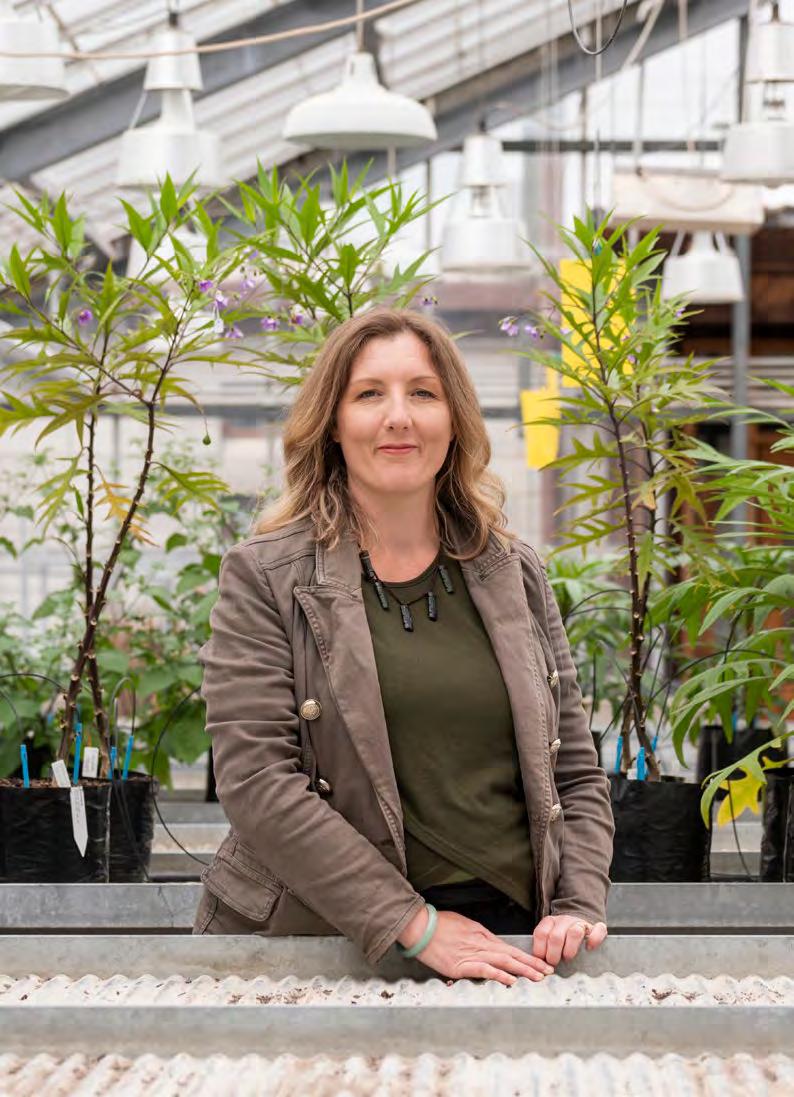
BOTTOM: Dubai’s ECO1 vertical farm aims to produce more than 900 tonnes of leafy greens annually, with a key focus on airline passengers.
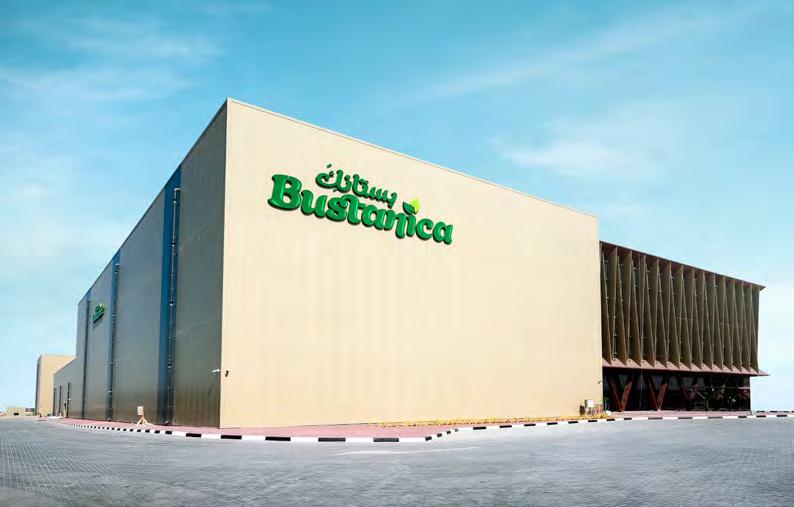
Strawberries under a roof
Wellington-based CEA company 26Seasons is one of Aotearoa’s largest companies of its type.
CEO Grant Leach said the company is well advanced in developing an indoor strawberry business, in addition to its established mixed microgreens operation.
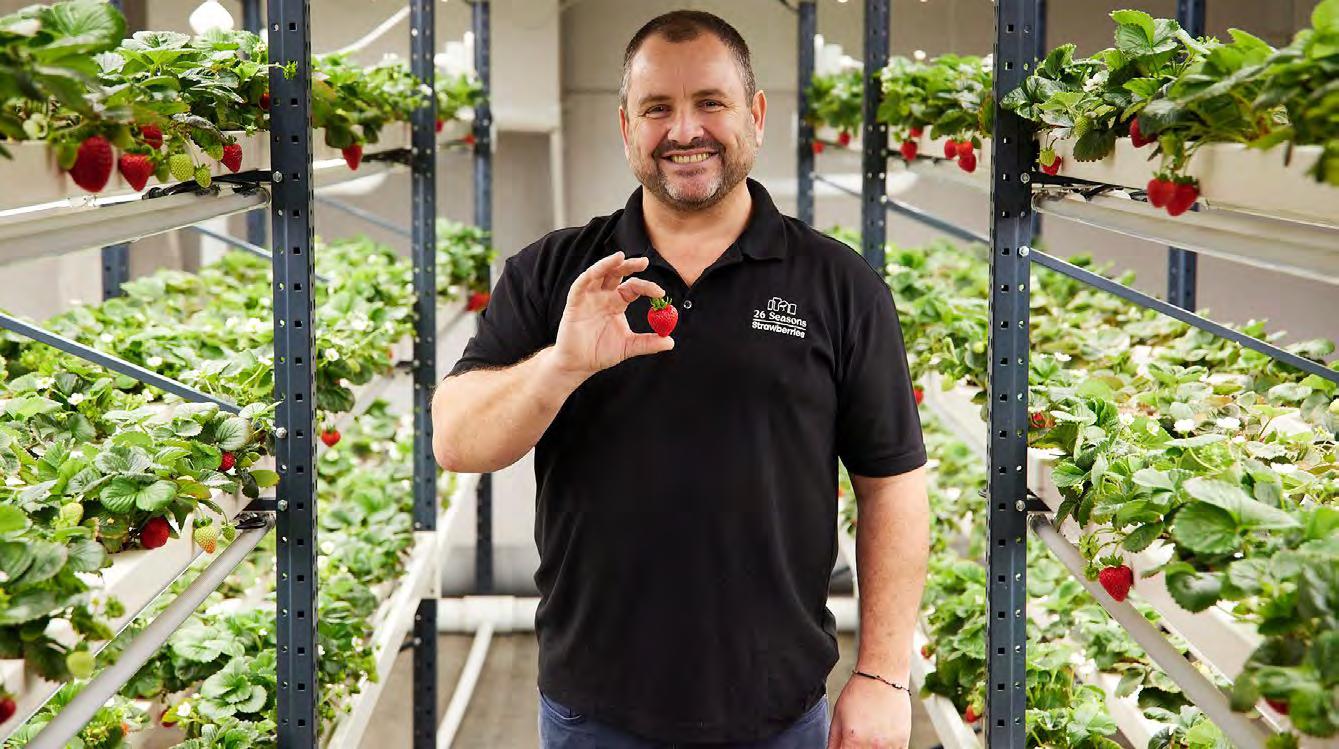
That microgreen operation is claimed to be many times more productive per square metre than its outdoor equivalent, harvesting the hydroponically grown crops every two weeks, hence the company’s name. Its strawberry operation is claimed to be about eight times more productive per square metre than outdoor equivalents, owing to the vertical nature of growing.
Based in its Foxton premises, several years of trialling has resulted in identifying a hybrid strawberry variety suited to indoor growing.
However, Leach puts the challenge of growing a crop like strawberries at the top end of the difficulty scale compared with micro and leafy greens.
“To get a commercially viable business you have to be able to also deliver consistently good quality fruit at a high yield, ensuring you have the ability to manage the shifting nutritional profile that comes with each growth stage, with pin-point accuracy.”
Pollination, climate and pest management inevitably add to the challenges.
“Then you need the technology to monitor, diagnose problems and respond in a very timely manner. That is critical in any system we use.”
The company has 600m2 of space committed to a proof of concept and aims to double that in the coming year.
“We foresee the ability to supply strawberries out of season. We are not focused on competing with local growers in season. We see an opportunity to grow for the entire market and remove the need to rely upon carbon intensive overseas berries to meet that demand.”
Ultimately 26Seasons would like to develop a hub of CEA expertise in the Horowhenua district.
Growing Kiwi technology
In Waikato at Ruakura Innovation Park, start-up company Greengrower is leveraging the city’s talent pool that covers both agronomy knowledge and mechanical engineering talent in commissioning its first indoor operation.
CEO Tom Schuyt said he sees a confluence on technology, resource challenges and consumer demand all driving CEA’s growth.
Technology improvements in LED lighting and sensor tech that can help better monitor plant performance have also had a role to play in a system he said used only 1% of the water that conventional systems use and recycled 99% of that water.
Developments in solar technology mean the company is also looking at future partnerships with solar generators to provide a zero-carbon electricity source, as they ultimately work towards zero-carbon certification.
The company is working with the US vertical farming company Elevate to ‘kiwi-ise’ their systems at the Ruakura site, which he said would generate the equivalent in leafy greens that 150 ha of bare land would do.
Tauranga-based company Bluelab can claim some of the industry’s leading technology for CEA crop monitoring and diagnosis.
A major player in CEA monitoring and diagnostics, CEO Jono Jones takes a global view of the sector’s growth. He says the United States is an interesting market, now with over 2000 vertical farms.
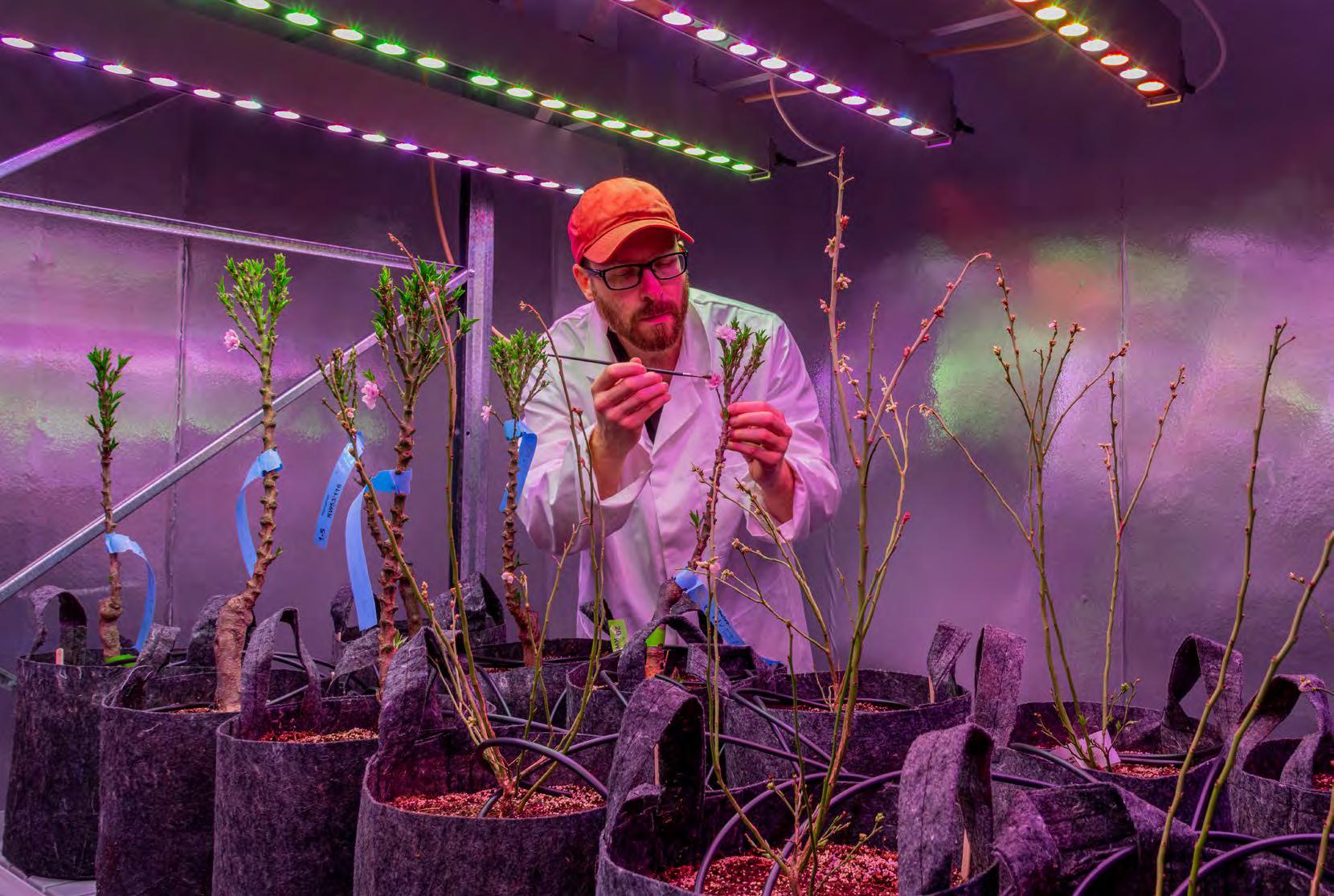
With up to 90% of its vegetables and fruit coming out of California, the country has very long supply chains which are helping reduce energy costs and transport times.
Here in Aotearoa, Jones believes the volatility of climate change will be a key driver for considering CEA, while future climate change impacts like greater humidity in northern New Zealand could also prompt a need to grow more crops indoors, as is required in Southeast Asia.
“One of the biggest challenges for vertical farming is energy. A vertical farm will generally expand more CO2 per kg of produce, but the water consumption will be significantly lower. But the emissions can be managed, which comes back to energy.”
Jones believes New Zealand’s high level of renewable energy could do much to contribute to CEA having a lower carbon footprint.
Taking CEA systems to the world
Baldwin says the next big step for ‘New Zealand Inc’ is what technology developed here could mean for entire farm systems, both here and abroad.
“It could become a great deal more like remote growing, where we sell the technology under a licence agreement.
“Locally it could mean every housing development could have its own ‘farm’. With two thirds of the world’s population living in cities by 2050, de-centralising supply chains and boosting accessibility will only become more critical.
“If we could design growing systems capable of producing the food we need, without stepping beyond our city block, that will have many benefits environmentally and socially,” she says. •








